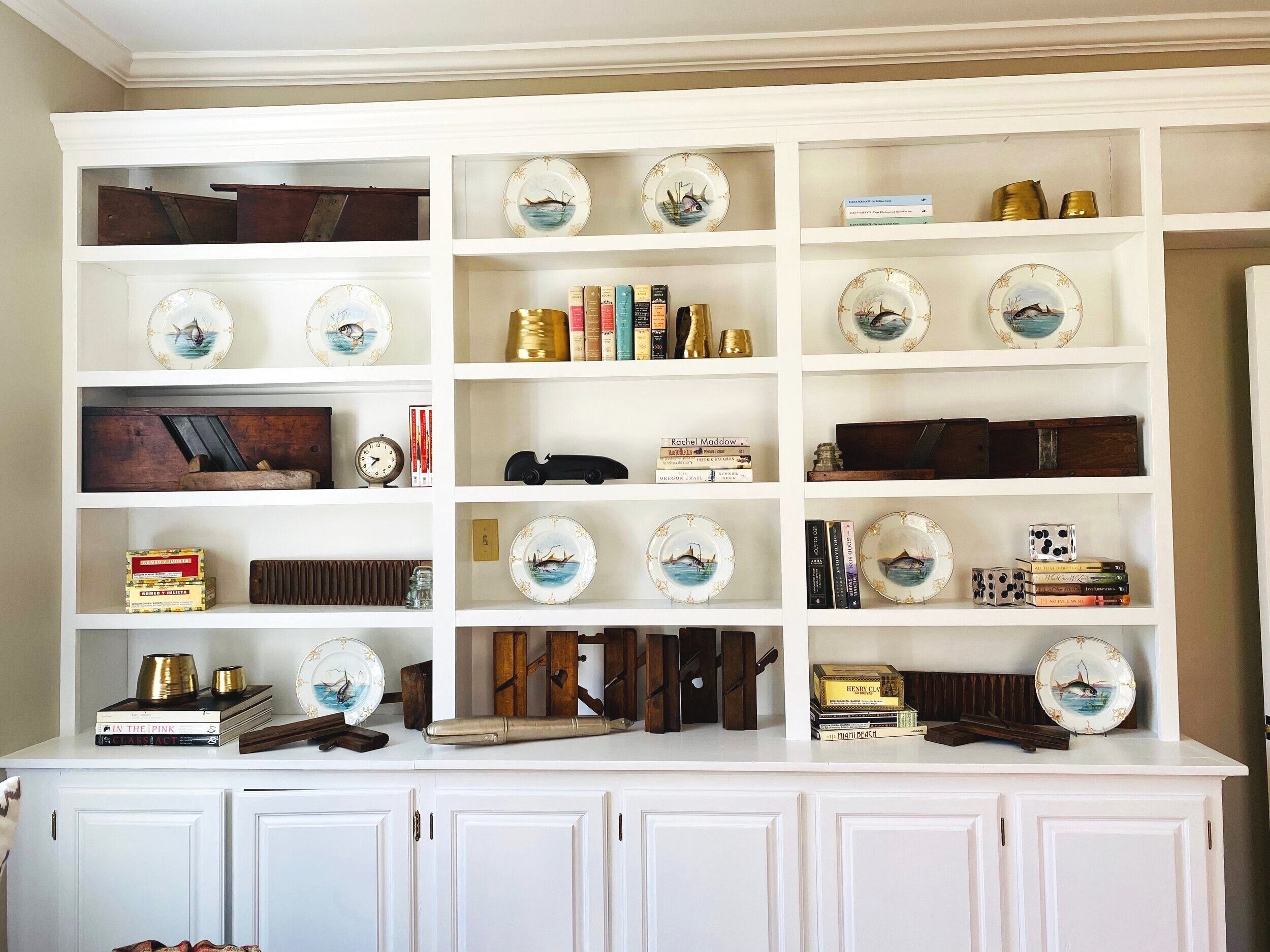Is your bookshelf more chaos than calm? If you’re tired of shoving books into any available space or feeling like your living room lacks a certain polish, you’re in the right place.
Staging a bookshelf can transform not just the look of a room, but also how you feel every time you step into it. Imagine a space that invites you in, showcases your personality, and becomes a focal point of conversation.
You don’t need to be an interior designer to achieve this. With a few simple tweaks, you can turn your cluttered shelves into a stunning display that reflects your style and creativity. Ready to make your bookshelf the star of your home? Let’s dive into some easy, actionable tips that will have you styling like a pro in no time.

Credit: www.stagedryte.com
Choosing The Right Books
Bookshelves look nice with different genresand sizesof books. Place a mix of fiction, non-fiction, and poetry. This adds color and interest. Use tall books and short books together. This creates a fun look. It makes the shelf look balancedand unique. Arrange some books standingand some lying flat. This adds varietyand style.
Show your favorite books on the shelf. Place them at the frontor on a special spot. This shows what you love to read. Add a bookmarkor a pretty cover. This makes your favorites stand out. Friends will see your best picks easily. It makes your bookshelf feel personaland special.
Incorporating Decorative Elements
Art makes a bookshelf look interesting. Choose pieces that match the room’s style. Small sculptures fit well on shelves. They add depth and character. Place them next to or in front of books. Art frames can lean against the wall. This gives a relaxed look. Try mixing different sizes and shapes. It creates a dynamic display. Avoid clutter. Too many items can look messy. Balance is key.
Plants bring life to a bookshelf. Use small potted plants. They are easy to care for. Greenery adds a fresh touch. Place plants on different shelves. This creates a natural flow. Succulents are a good choice. They need little water. Make sure plants get enough light. Rotate them often. This keeps them healthy.
Creating Visual Balance
Balance creates a calm feeling. Symmetrical setups are neat. Place books evenly on each side. Add objects in the middle. Asymmetrical setups are lively. Mix tall and short items. Group in odd numbers. Symmetry is safe. Asymmetry is fun. Choose what fits your style. Try both to see what you like. Balance is key.
Colors make shelves pop. Match book colors with room colors. Use similar shades. Bright colors grab attention. Neutrals are soothing. Arrange books by color. Create a rainbow effect. Mix colors for a playful look. Use colorful bookends. Add art for flair. Colors set the mood. Choose wisely.
Utilizing Personal Touches
Family photos bring warmth to your bookshelf. Place small frames between books. Memories make your shelf special. Add items from family trips. Souvenirs tell stories. Arrange them with care. Every piece speaks about you. Personal touches make the shelf unique.
Display unique collectibles with pride. Choose items that represent your hobbies. Small sculptures fit well among books. Vintage items add charm. Arrange them with balance. Collectibles show your personality. They make the shelf interesting. Each collectible has its own story.
Lighting Considerations
Accent lighting highlights special spots on your bookshelf. It brings focus to your favorite books or decor items. Use small lights to create a warm atmosphere. LED strip lights can be a good choice. They are easy to install and adjust. Choose soft white or warm yellow lights for a cozy feel. Bright lights can be harsh. Soft lights are gentle on eyes.
Natural light makes your bookshelf look fresh and inviting. Place your bookshelf near a window. Sunlight can brighten up the room. Avoid direct sunlight on your books. It might damage them over time. Use sheer curtains to filter sunlight. This keeps the room bright but protects your books. A well-lit room feels open and airy.

Credit: threebearshomestaging.com
Maintaining Functionality
Always keep your favorite books at eye level. This makes them easy to grab. Place heavier books at the bottom. This helps in stability. Smaller books can go on the top shelf. Use bookends to hold them in place. This prevents falling.
Group similar books together. This makes finding them simple. Separate sections for fiction and non-fiction. Use labels if needed. Keep magazines in a basket. This keeps the shelf tidy. Add some plants or frames for a cozy look.
Seasonal Adjustments
Add festive colors to your bookshelf for each season. Use red and green for Christmas or pastels for spring. Include small decorations like mini pumpkins for fall or snowflakes for winter. Arrange books by color to match the theme. This makes the shelf look cohesive and inviting. Consider using string lights for a magical touch. They add warmth and charm. These small changes make a big impact.
Switch book displays often to keep things fresh. Use a rotation plan based on seasons or moods. Highlight different genres or authors every month. This keeps your bookshelf dynamic and interesting. Use bookends for a neat look. Add small plants or trinkets for variety. They give the shelf a personal touch. Change positions of items to find the best look. Regular changes keep your shelf exciting.

Credit: www.stagingstudio.com
Frequently Asked Questions
How Do I Choose Items For A Bookshelf?
Choose items that reflect your personal style and interests. Combine books with decorative pieces like vases or sculptures. Use a mix of textures and colors to create visual interest. Remember to leave some empty space to avoid clutter. This makes your bookshelf look organized and inviting.
What Is The Best Way To Organize Books?
Organize books by genre, color, or size for a cohesive look. Alternatively, try arranging them by author or subject. Use horizontal and vertical stacking for variety. This adds dimension and makes the shelf visually appealing. Regularly update your collection to keep it fresh and engaging.
How Can I Make My Bookshelf Look Taller?
Use vertical lines and tall items to create height. Place taller books or decorative pieces at the ends. Adding a vertical plant can also draw the eye upward. This gives the illusion of a taller bookshelf. Mirrors or artwork above the shelf enhance the effect.
What Lighting Is Best For A Bookshelf?
Opt for soft, warm lighting to create a cozy atmosphere. LED strip lights or small lamps work well. Place them strategically to highlight specific areas or items. This enhances both function and style. Avoid harsh lighting that can damage books and create glare.
Conclusion
Staging a bookshelf transforms your space and showcases personality. Start with books, arranging them by size or color. Add decorative items like vases or framed photos for interest. Use plants to bring life and texture. A mix of shapes and sizes keeps the look balanced.
Remember to leave some space open for a clean appearance. Change items occasionally to keep things fresh. Your bookshelf reflects you, so make it unique. Enjoy experimenting until it feels just right. A well-staged bookshelf invites guests to explore and adds charm to any room.

Home Interior Design & Renovation Expert at HomeFixio
Sierra Wellington is a skilled home interior designer with extensive experience in plumbing, fittings, and home renovations. Having worked on numerous residential projects, Sierra specializes in creating functional and aesthetically pleasing spaces. With a keen eye for design and a deep understanding of the technical aspects of home improvement, he provides expert advice on everything from layout planning to fixture installations. As a writer for HomeFixio, Sierra shares his practical insights and creative solutions, helping homeowners elevate their spaces with precision and style.
